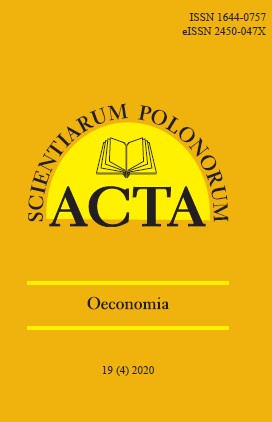USE OF DISCRIMINATORY MODELS TO VERIFY THE LIKELIHOOD OF CONTINUED ACTIVITIES FOR ENTERPRISES: CASE STUDY ON SELECT ENTERPRISES FROM THE AUTOMOTIVE INDUSTRY
USE OF DISCRIMINATORY MODELS TO VERIFY THE LIKELIHOOD OF CONTINUED ACTIVITIES FOR ENTERPRISES: CASE STUDY ON SELECT ENTERPRISES FROM THE AUTOMOTIVE INDUSTRY
Author(s): Wojciech LichotaSubject(s): Business Economy / Management, Methodology and research technology, Accounting - Business Administration
Published by: Szkoła Główna Gospodarstwa Wiejskiego w Warszawie
Keywords: discriminant analysis; banking methods of assessing creditworthiness; financial condition of the enterprise; early warning models;
Summary/Abstract: The main aim of this article is to assess the use of discriminatory models to verify the likelihood that an enterprise’s activities will continue, using a sample of enterprises from the automotive industry as a case study. The suitability of 10 models will be verified by a three-point credit assessment method. As seen in the research results, discriminatory models can be used to verify an enterprise’s likelihood of continuing its activity. Taking into account the received values for discriminatory functions and banking methods over four years, a convergence of indications was demonstrated. In the vast majority of cases, the increase or decrease in the value of the functions was reflected in a corresponding change in the value of banking methods. Based on the conducted research, it should be stated that the most characteristic variables influencing the values of the discriminant function in the automotive industry concerned debt and profitability.
Journal: Acta Scientiarum Polonorum. Oeconomia
- Issue Year: 19/2020
- Issue No: 4
- Page Range: 95-102
- Page Count: 8
- Language: English

